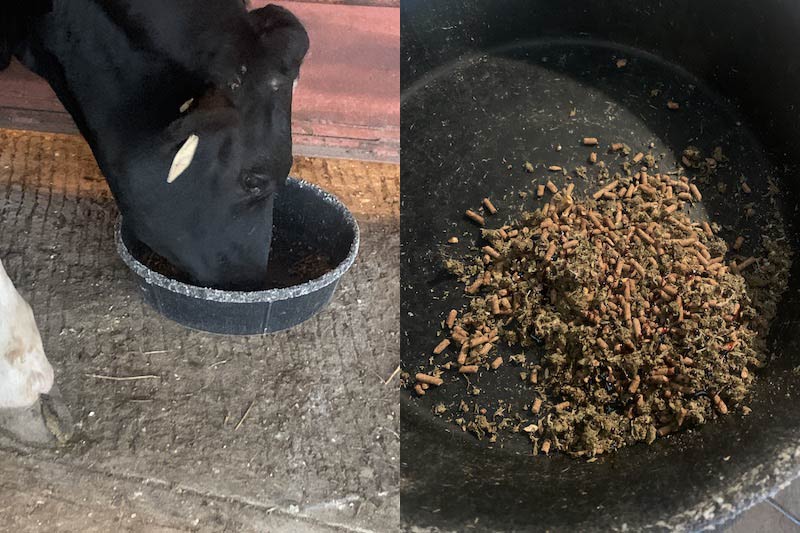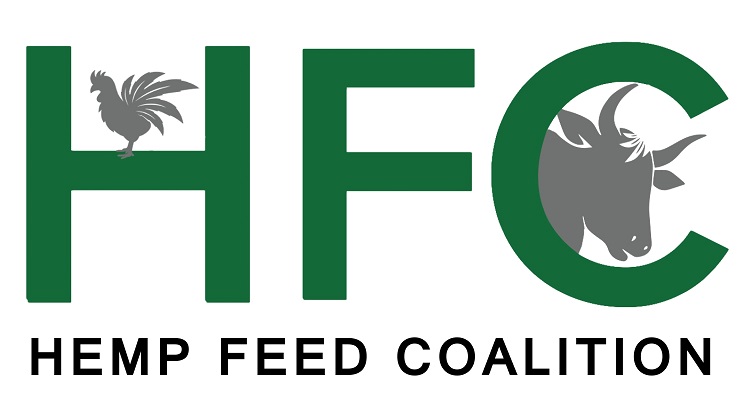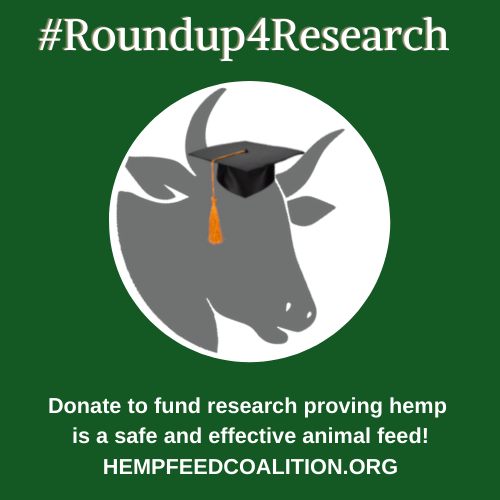While researchers and businesses are learning more about the hemp plant’s versatility, some in the nation’s agricultural sector are already investigating the possibility of hemp being employed as a new and important source of livestock feed.
Several academic studies on hemp’s potential as livestock feed are currently underway at universities around the United States. For example, researchers at Oregon State University (OSU) are looking at whether feeding spent hemp biomass to lambs will create cannabinoid residuals in their meat, and potentially affect animal health and performance, according to the Corvalis Advocate.
“Our long-term goal is to implement the safe use of hemp byproducts in livestock diets,” OSU researcher Massimo Bionaz wrote on his lab website, “and take full advantage of their nutritional and potential medicinal properties to improve animal health and the quality of animal products.”
USDA Funding Research
A two-person research team at Kansas State University, meanwhile, recently received a $200,000 grant from the USDA’s National Institute of Food and Agriculture, according to Phys.org. The researchers are investigating the concentrations of cannabinoids in the milk, meat, and edible tissues of livestock that are fed industrial hemp.
“We found hemp plants and plant parts could be an attractive feed commodity for bovines,” Michael Kleinhenz, assistant professor at Kansas State University’s College of Veterinary Medicine and co-researcher on the feed study, told Hemp Benchmarks.
Kleinhenz noted that ruminant animals like cattle and sheep can readily digest hemp’s high-cellulose plant material, breaking down hemp in their rumen and converting it into different nutrients. However, he added, the nutritional benefits of hemp feed depend on what part of the plant is being given to the livestock. “Flowers and seed and the chaff, those have pretty decent crude protein in them,” he noted. “There’s a 20% range of crude protein [in some hemp parts], same as alfalfa. That’s attractive for beef cattle. Other parts are negligible, like the stalk that’s full of fiber.”
He also believes that hemp, ground down into meal or made into hemp cake, has potential as an alternative feed during the animal’s lifespan. “It would depend on the variety and what the hemp was grown for,” Kleinhenz said. “I would see it more for a growing phase and/or maintenance,” rather than as a “finishing feed” during the final months before slaughter, when livestock are given specialized feed to ensure they reach their target weight.
Cannabinoid Content: The ‘Million Dollar Question’
The biggest downside to hemp as livestock feed is the plant’s cannabinoid content. Kleinhenz noted that in an early study of hemp’s components at his university, his group was able to find cannabinoids throughout the plant. At the moment, he said, the U.S. Food and Drug Administration (FDA) considers cannabinoid content in food items to be an adulterant and not safe for human consumption; much like antibiotics found in milk or meat are considered an adulterant. This position applies to non-psychoactive cannabinoids, such as CBD, as well as psychoactive ones like THC.
“So the million dollar question is: if you feed [hemp] to an animal, how much cannabinoid gets into the animal?” he said. “If an animal is fed hemp, how long from that last feeding can food from that animal … be safely harvested and enter into the food chain?”

Image Source: Dr. Michael Kleinhenz
‘Is it Going to Get My Cows High?’
Despite its very low THC content, hemp still faces the decades-long cultural stigma associated with its cousin, marijuana. However, says Hunter Buffington, that attitude appears to be changing. Buffington is executive director of the Colorado-based Hemp Feed Coalition (HFC), a group of experts and leaders from the hemp, livestock, and pet industries, as well as from other businesses, who advocate for the federal legalization of hemp as an animal feed.
“When I started this job, almost three years ago, the most common question that I got was, “Is it going to get my cows high?” she told Hemp Benchmarks with a laugh. “Now, three years into it, people are flabbergasted that [hemp] is not already approved for use as animal feed. So there’s definitely been a change in the marketplace.”
According to Buffington, farmers in certain scenarios are more likely to support hemp as livestock feed than others. The people who will enter the market first, she said, are the “early adopters” who will end up feeding their livestock directly from the hemp crops they produce. However, Buffington also believes that the big corporate livestock feed companies, like Purina and Tyson, could end up producing their own versions of hemp livestock feed if and when it receives regulatory approval.
Obstacles on the Regulatory Pathway
As the HFC notes on its website, “the pathway to ingredient approval for hemp and its byproducts is time consuming and complicated.” According to the group there are two different ways that hemp ingredients for livestock feed can gain approval from the federal government. One is through a New Ingredient Definition via AAFCO (Association of American Feed Control Officials), a voluntary organization of local, state, and federal agencies. There is also the submission of a Feed Additive Petition directly to the FDA’s Center for Veterinary Medicine (CVM).
“We cannot get legal approval legislatively,” noted Buffington. She added that HFC is working on having a new definition of hemp seed cake adopted, so it can be used as feed for laying hens, as well as an application for hemp seed cake and meal for ruminants. That first application is being submitted to AAFCO this month, and then to CVM. Buffington said it will take time.
“Lightning speed for an application like this, for a new ingredient definition, is two years,” she said “The typical time is four years, to go all the way through the FDA/CVM process. But AAFCO and veterinarians are supportive of the efforts we’re making. Our hope is we can meet that two years approval.”
The timeline projected by Buffington aligns with statements from other industry operators. In a recent Hemp Market Insider report on the U.S. grain hemp market, we noted that a processor stated he believed approval of hemp grain as animal feed would take three to five years.
Having a Regional Impact
Shawn Archibeque is a professor at Colorado State University. He is involved in a major research project at the school; feeding hemp to wethers (young castrated male sheep) and seeing if the plant works as a protein supplement. Archibeque told Hemp Benchmarks that hemp appears to be a good protein source for livestock, “very comparable to other protein sources like soybean meal.”
For his part, Archibeque expects the introduction of legal hemp feed into the agricultural market to have a regional impact, possibly filling a livestock feed void in certain parts of the U.S. He pointed out that regions that grow corn and other grains, and that traditionally use those grain byproducts as feed, probably will not adopt hemp feed, as other sources are readily available. “But the intermountain West, parts of the Great Plains, could definitely see … some very good market opportunities” for hemp feed, he added.
Anticipating Market Demand
The HFC’s Buffington said that if and when hemp feed is federally approved, feed producers will still be dealing with a very volatile hemp market. “A lot of folks come to me and ask me to give them market prices, and with an industry this young it’s hard to make those assumptions,” she stated.
There are also overarching market formation issues to consider, Buffington said, such as “being able to invest and have a scalable supply chain, to meet the kind of market demands that we’re anticipating.” However, she added, the expected timeline of HFC’s aforementioned application should coincide with the overall federal approval of hemp livestock feed by the FDA’s CVM and AAFCO; the two to four year lead time should give the hemp market the opportunity to scale up its production to be able to meet the demands of large feed formulators and distributors.





